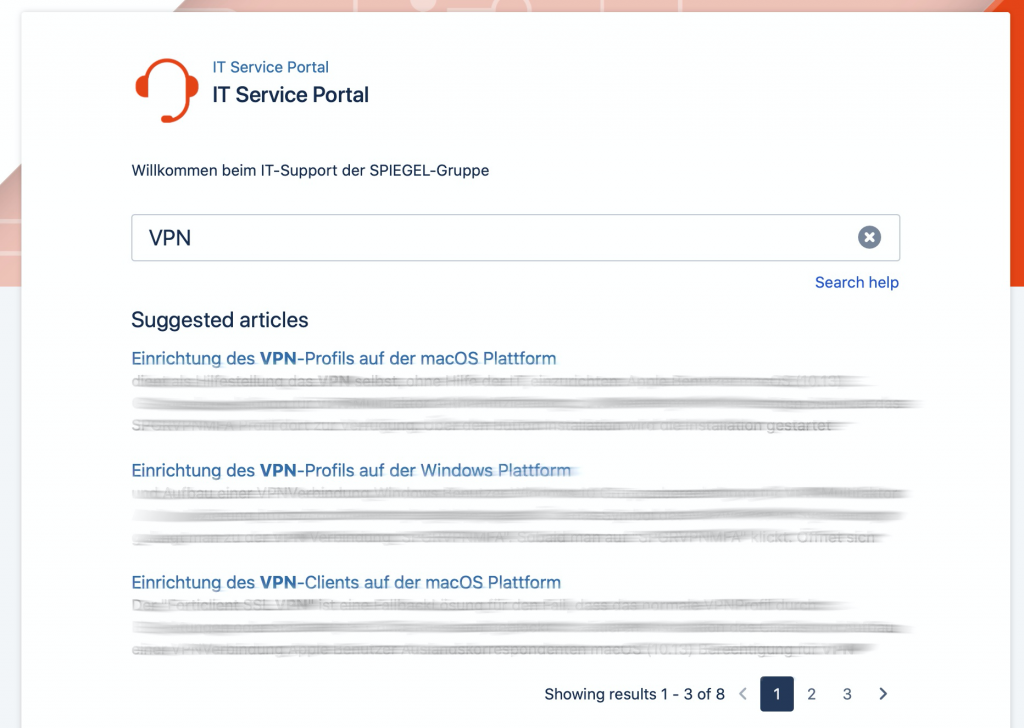Everything is connected!
At one of our customers from the publishing industry, we implemented a service catalog together with the IT department. This catalog documents all IT services and provides precise information on all services in operation. All service management processes in the company are supplied with central information through this process – for example, the current status of a service or the interdependencies between services.
At its core, the process is based on the interplay of Jira Software, Jira Service Management, Confluence and Assets, in the form of a Configuration Management Database (CMDB)).
Jira Service Management & Jira Software
In the customer portal of Jira Service Management, the individual request types are presented to users clearly and understandably. Established processes such as Service Request or Incident Management sit behind each request type. This allows requests to be routed in a targeted way when a ticket is created and assigned to the right points of contact.

When creating a new ticket, the corresponding business service is selected at the same time ( a description of how a function appears to the user). The request provides insight into the underlying issue and shows which follow-up activities are required. Forwarding to the appropriate department takes place either automatically based on the highest probability or manually by selecting the relevant IT service.
The assignment of all necessary information takes place entirely in the background – the user is not burdened with unnecessary prompts. The agents in service management and the IT service owners automatically receive all relevant information from the CMDB and can process the ticket and the work items efficiently and in a targeted manner.
Users are kept informed at all times and can communicate directly with the responsible contact through their request.
For the internal IT and help desk teams, individual dashboards were set up that display personalized information depending on the logged-in user. This makes it easy to see which tickets are open or already assigned – while ensuring that only relevant information is visible.
Thanks to the integrated SLA-features in Jira Service Management, queues and filters can be defined that trigger notifications when, for example, a processing time has been exceeded or a ticket has remained in a particular status for too long.
Confluence
Confluence serves as a central knowledge base and is maintained with all relevant information needed by internal users. This primarily includes instructions for delivering services across a wide range of categories.
In the customer portal, customers can enter a keyword in the search field and are shown all matching articles. Ideally, the answer to their question is already there (e.g., how to set up a printer, connect via VPN, etc.). This saves agents in the help desk from new, duplicate and most importantly recurring tickets.

Individual pages can also released to customers as self-help guides in Confluence reducing the need to contact support at all.
To keep document structures consistent and clear, templates were created that define a basic structure.
Asset Management with Assets (formerly Insight)

The Configuration Management Database (CMDB) contains all information about the services in the company and links them with all related information. This makes it possible, for example, to see which PC is assigned to a user and what software permissions, which drives, and which printers are linked to their device. If the user does not have this information, the help desk can view it via the CMDB data and initiate appropriate actions, e.g. trigger a service-call to resolve a paper jam on the linked printer. The printer’s name and exact location, as well as all other device-specific data, are stored in the CMDB and thus help resolve any incident more quickly.